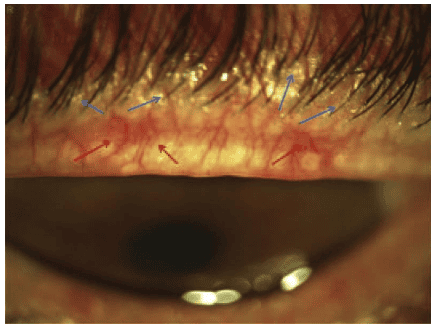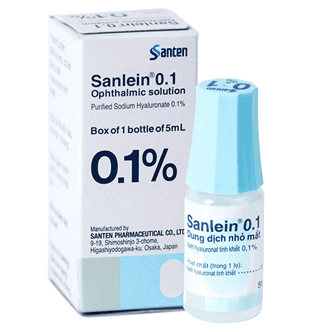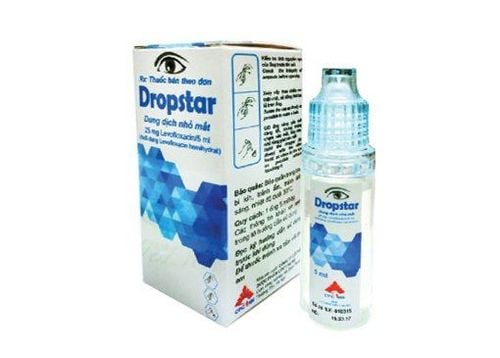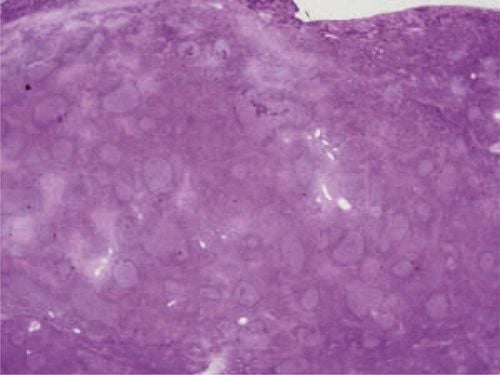This is an automatically translated article.
Post by Master, Doctor Mai Vien Phuong - Department of Examination & Internal Medicine - Vinmec Central Park International General Hospital
The association between Helicobacter pylori (Hp) infection and eye diseases is increasingly being reported in the literature and in active studies. The impact of this bacterium in chronic eye diseases, such as blepharitis, glaucoma, central serous cholecystitis and others, has been hypothesized.
1. Helicobacter and blepharitis
Blepharitis is a common condition where the eyelids become inflamed, with oil and bacteria particles coating the edge of the eyelid near the base of the eyelashes. The underlying cause of blepharitis is not well understood, it may be related to bacterial eye infections, dry eye symptoms, and certain types of skin conditions such as rosacea. From a dermatological perspective, the diagnosis of blepharitis is made if one or more lesions on the eyelid margins are observed in association with a non-granulomatous inflammatory response. This lesion is classified as rosacea blepharitis if the following are present: flushing; persistent hyperemia with scattered pustules, papules and pustules; disseminated blood vessel congestion, especially on the nose or cheeks; or phymas. Seborrheic blepharitis is diagnosed when the following are present: greasy-looking scales and/or scales; increased redness and discoloration of the skin; or clinical manifestations on the trunk, scalp and face (including lids). Mixed dermatitis or blepharitis was diagnosed if one or more lesions were observed that met the criteria for both classification systems described previously. Rosacea is considered together with diseases of the anterior segment, such as blepharitis, nodular conjunctivitis, episiotitis, and painful infiltrative keratitis. It is interesting to emphasize that digestive troubles are more connected with rosacea than to increased sebum secretion, although the two conditions are closely related. According to Boni R., "Diseases of seborrheic origin include rosacea, acne vulgaris, gram-negative folliculitis, demodex-follicular, perioral dermatitis as well as seborrheic dermatitis."
2. The role of Hp in ocular rosacea
Hp is the main cause of gastritis and the main cause of peptic ulcer disease. There have been several studies suggesting a possible etiological role of Hp in rosacea (redness of the skin of the face). The association between seborrhea and Hp seems more uncertain, although it has been reported by other authors. Furthermore, seborrheic dermatitis can be observed with other skin diseases, such as rosacea, blepharitis and ocular rosacea, and with acne. It can therefore be asserted, albeit with some uncertainty, that digestive problems may be correlated, or at least related, to the presence of blepharitis. Following this hypothesis, another study investigated the relationship between blepharitis and H. Although possible sources of pathology must be considered when determining the association of the two highly common conditions, the data seem to confirm the association between H.P. infection and blepharitis. However, this association still may not be indicative of a causal relationship. Therefore, because blepharitis and H.P. infection are widespread, it is difficult to know whether this prevalence is real or coincidental. Furthermore, several studies have suggested a possible etiological role of Hp in rosacea, as the prevalence of Hp infection in rosacea patients is higher than in controls and Hp eradication reduces the severity of the disease. severity of rosacea.
3. The relationship between blepharitis and Hp . infection
In general, the association between blepharitis and H.P. infection was not influenced by clinical presentation or grade; Their only common factor seems to be chronic inflammation of the eyelids and gastrointestinal tract. Indeed, gastric epithelial cells release cytokines, such as interleukins, which act as proinflammatory stimuli, promote the release of other cytokines and contribute to the inflammatory state, in combination with histamine from mast cell degeneration. Mechanisms of cross-mimicking between bacterial and antigenic antigens may affect the digestive organs. Free radical and lipid peroxide generations are important for the outcomes achieved in inflammation; Therefore, Hp can increase serum or tissue concentrations of nitric oxide, causing vasodilation, inflammation, and immune modulation. The effectiveness of therapy is certainly related to blepharitis, but it is not known whether rosacea plays a larger role than other types of blepharitis.

4. Treatment of chronic blepharitis caused by H.pylori
Chronic blepharitis is one of the most difficult eye diseases to treat and we don't know if antibiotics for digestive disorders have a side effect on blepharitis. Thus, Hp eradication therapy treats the infection while also affecting the state and flora of the eyelids. This is indeed plausible, as antibiotics can have a local effect, in addition to a systemic effect. Therefore, these drugs can act on conjunctiva and lid bacteria, as well as H. In some cases, it has been shown that the associations between chronic blepharitis, blepharitis lipids, and microbiome suggest an important relationship between these lipids and blepharitis disease states. chronic. Antibiotics, such as tetracycline, inhibit lipase activity, thereby reducing the release of toxic free fatty acids. Dougherty et al. have shown that tetracycline reduces bacterial lipase activity in vitro. Therefore, it would be reasonable to assume that antibiotics act on blepharitis. The cause of rosacea is still unknown, even if there is a link between rosacea and certain digestive conditions, such as gastritis, hypochloremia, or certain mucosal abnormalities jejunum, was well established. Among many hypotheses, the role of Hp is often a subject of investigation. Different studies have produced conflicting results. The primary treatments for ocular rosacea are topical metronidazole and oral tetracycline, given for several months. Furthermore, topical metronidazole, which is effective for stage I and stage II rosacea and avoids the toxicity of systemic treatment, is considered first-line therapy. Rosacea responded well to oral antibiotics, and systemic treatment, including metronidazole, was used in this clinical study. Therefore, it is difficult to understand how and whether it is possible to directly infect the eyelids with H. Although Hp has been found in the mouth, the presence of Hp in the human oral cavity should be considered transient and independent of the patient's oral condition, but no studies have shown a relationship yet. direct causal relationship between Hp infection and diseases. Finally, there are currently no other studies investigating the relationship between blepharitis and H.
Please dial HOTLINE for more information or register for an appointment HERE. Download MyVinmec app to make appointments faster and to manage your bookings easily.
References:///
1. Parsonnet J, Shmuely H, Haggerty T. Stool and oral shedding of Helicobacter pylori from infected healthy adults. JAMA 1999; 282 : 2240–2245. [ PubMed ] [ Google Scholar ]
2. Leung WK, Siu KL, Kwok CK, et al. Isolation of Helicobacter pylori from vomiting in children and its impact on gastrointestinal-oral transmission. Am J Gastroenterol 1999; 94: 2881–2884. [ PubMed ] [ Google Scholar ]
3. Suerbaum S, Michetti P. Helicobacter pylori infection. N Engl J Med. 2002 year; 347 : 1175–1186. [ PubMed ] [ Google Scholar ]
4. Sergio Claudio Saccà, MD, Aldo Vagge, Helicobacter pylori Infection and Eye Diseases: A Systematic Review. Medicine (Baltimore). 2014 Dec; 93(28): e216.














